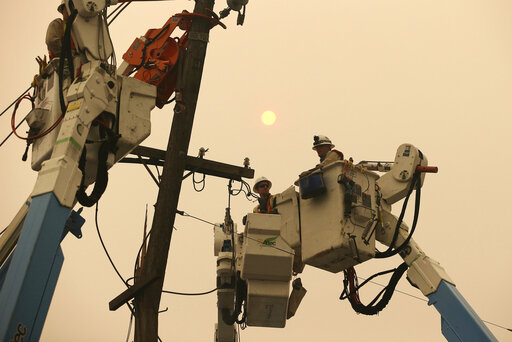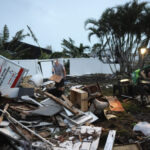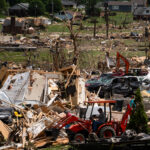PG&E Corp. told a federal judge who has kept the troubled utility under a tight leash that it’s close — but not fully on target — to complying with all the wildfire prevention measures required under its criminal probation.
The utility said it had fallen short of commitments it made under its own safety plan to inspect and repair lines, clear vegetation and cut tree branches near its power lines to maintain safety standards. The disclosure came in a written response Wednesday to questions raised by U.S. District Judge William Alsup, who is overseeing the company’s probation after PG&E was convicted in 2016 of gas-pipeline safety violations.
The San Francisco judge has peppered the company with questions for months as he seeks to determine whether its equipment is to blame for any of last year’s wildfires in northern California, as well as how the state’s largest utility managed widespread power outages as a fire prevention measure.
The company is forbidden under the terms of its probation from violating any laws. Alsup last year found PG&E had violated probation by failing to report that it reached a settlement in a criminal probe of its role in a northern California wildfire in 2017. After concluding that the company’s record on vegetation management was “dismal,” the judge ordered the utility to make improvements.
In Wednesday’s report, PG&E said it “recognizes it has more work to do” to continue to improve its tree trimming and other wildfire safety programs, but said it made significant progress in responding to an increased fire threat. PG&E also defended itself, describing to Alsup, as it has previously, the improbability of being able to patrol all its lines all the time. It also noted that it wasn’t responsible for any deaths last year, and a decrease in the number of fires it caused.
PG&E said it hadn’t been able to meet all of the targets set out in its wildfire mitigation plan. For example, the utility said it wasn’t able to complete all of its repair work on power lines it inspected due in part to circumstances beyond its control.
The company conceded that one element of vegetation management program was “below target,” based on a commitment last year to “rework” any trees that were previously missed or incorrectly reviewed. “The ‘first pass’ quality results of this work verification process were about 60 percent for the year,” according to the filing. In other categories of the report, such as wildfire safety inspections, PG&E scored itself 100%. In others, such as a sub-category of system hardening, it scored itself 114%.
“Perfect compliance would require nothing less than round-the-clock surveillance of all trees within striking distance of PG&E’s equipment to identify and abate any hazard as soon as it arises,” the utility said.
Alsup has proven to be a rigorous taskmaster for PG&E. He has warned that anything short of complete compliance could be costly as he continues to wield power over the utility’s operations. PG&E may not learn Alsup’s response until the next hearing in the case, which isn’t currently scheduled.
San Francisco-based PG&E filed for Chapter 11 bankruptcy protection in January 2019 after its equipment was blamed for devastating blazes, crippling it with an estimated $30 billion in liabilities. The utility has been trying for months to negotiate a plan to exit bankruptcy that would keep shareholders from being wiped out while paying $13.5 billion to wildfire victims.
California has set a June 30 deadline for the utility to win court approval of its reorganization if it wants to participate in an insurance fund that would shield it from future catastrophic wildfire losses.
The case is U.S. v. Pacific Gas and Electric Co., 14-cr-0175, U.S. District Court, Northern District of California (San Francisco).
Was this article valuable?
Here are more articles you may enjoy.


 SEC Dropping Enforcement Case Against Binance Crypto Exchange
SEC Dropping Enforcement Case Against Binance Crypto Exchange  Here Comes Another Busy Atlantic Hurricane Season, But Will It Be as Crazy as 2024?
Here Comes Another Busy Atlantic Hurricane Season, But Will It Be as Crazy as 2024?  Trump Administration Targets Resiliency Funds to Shrink FEMA’s Role
Trump Administration Targets Resiliency Funds to Shrink FEMA’s Role  Reddit Sues Anthropic, Says AI Company Exploited User Data
Reddit Sues Anthropic, Says AI Company Exploited User Data 